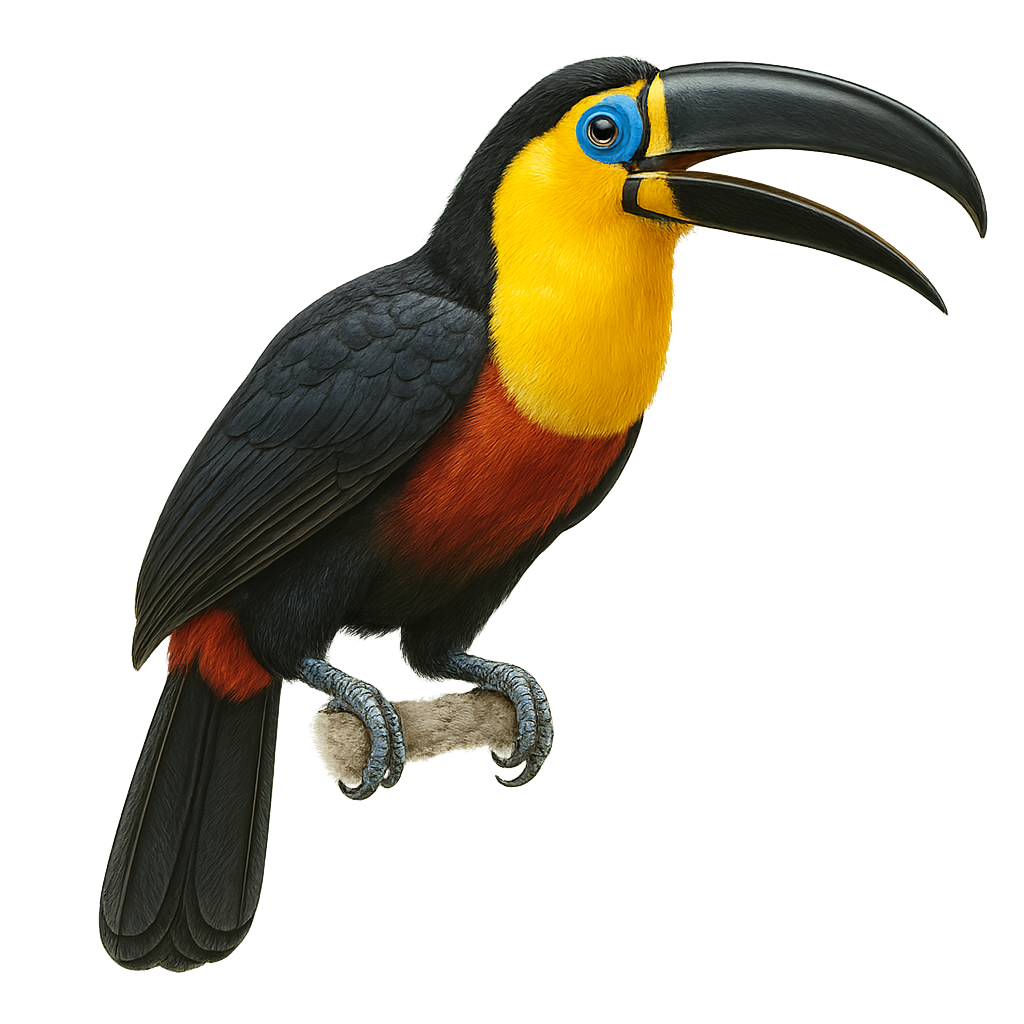Your wildlife photography guide.
Explore the channel-billed toucan in detail, study its behavior, prepare your shots.
Where to observe and photograph the channel-billed toucan in the wild
Learn where and when to spot the channel-billed toucan in the wild, how to identify the species based on distinctive features, and what natural environments it inhabits. The WildlifePhotographer app offers tailored photography tips that reflect the channel-billed toucan’s behavior, helping you capture better wildlife images. Explore the full species profile for key information including description, habitat, active periods, and approach techniques.
Channel-billed Toucan
Scientific name: Ramphastos vitellinus

IUCN Status: Least Concern
Family: RAMPHASTIDAE
Group: Birds
Sensitivity to human approach: Suspicious
Minimum approach distance: 10 m
Courtship display: January to February
Incubation: 16-18 jours
Hatchings: January to March
Habitat:
Tropical forests, rainforests, forest edges
Activity period :
Primarily active during the day, with peak activity in the morning and late afternoon.
Identification and description:
The Channel-billed Toucan, or Ramphastos vitellinus, is a striking bird native to the tropical forests of South America. It is easily recognized by its glossy black plumage, yellow cheeks, and large, colorful bill. Despite its size, the bill is lightweight due to its hollow structure, aiding in thermoregulation and fruit manipulation, which is its primary diet. These toucans are social creatures, often found in groups, and are known for their loud calls. They nest in tree cavities, where the female typically lays two to four eggs. Channel-billed Toucans play a vital role in the forest ecosystem by dispersing seeds.
Recommended lens:
400mm – adjust based on distance, desired framing (portrait or habitat), and approach conditions.
Photography tips:
To photograph the Channel-billed Toucan, focus on tropical forests where it is most active. Use a 400mm or longer telephoto lens to capture detailed images without disturbing the bird. Be patient and discreet, as these birds can be suspicious. Look for moments when they are feeding or interacting socially, as this offers unique opportunities for dynamic shots. Take advantage of the natural morning light to achieve vibrant colors and good contrast.
The WildlifePhotographer App is coming soon!
Be the first to explore the best nature spots, track rutting seasons, log your observations, and observe more wildlife.
Already 1 431 wildlife lovers subscribed worldwide

